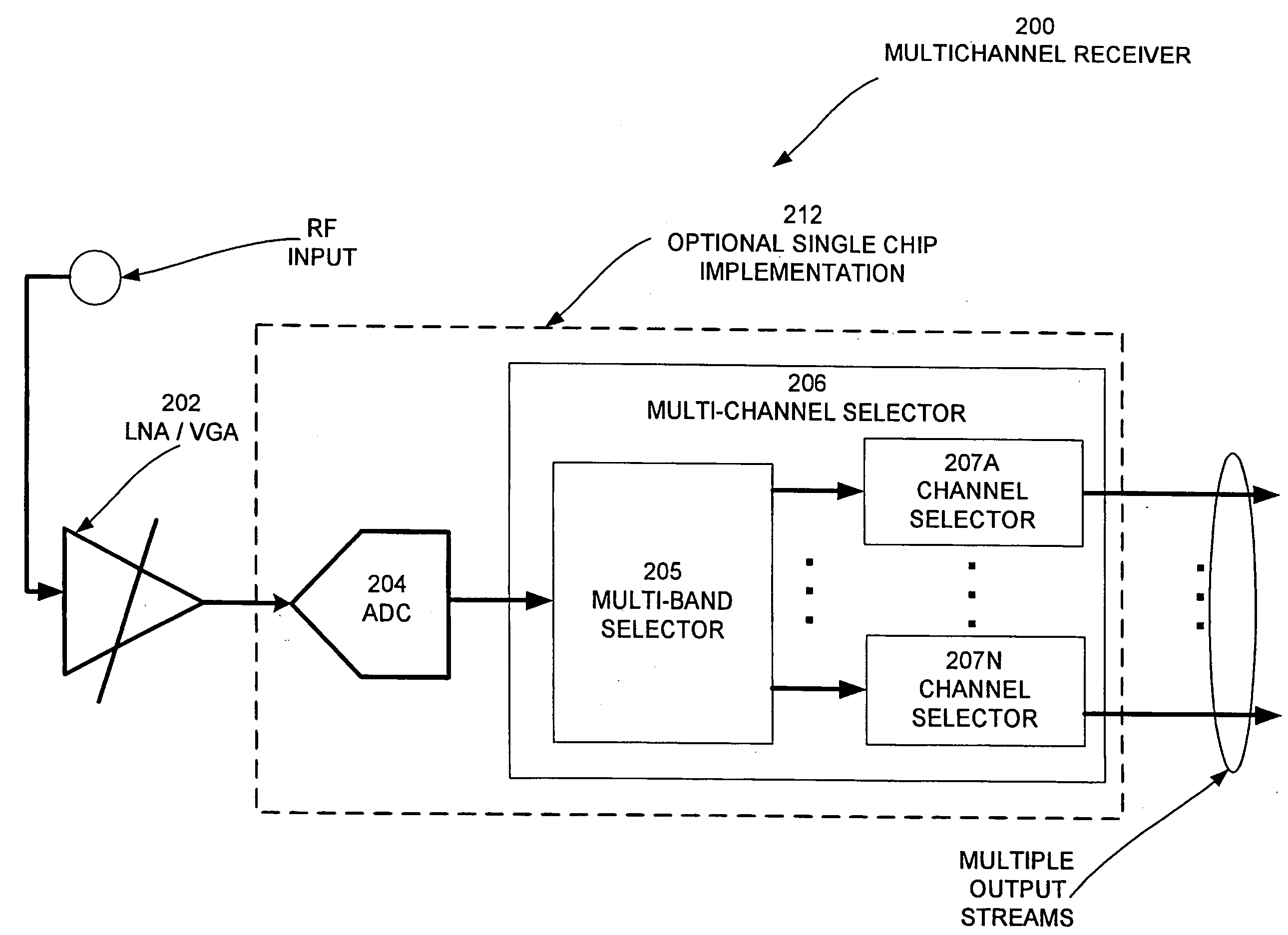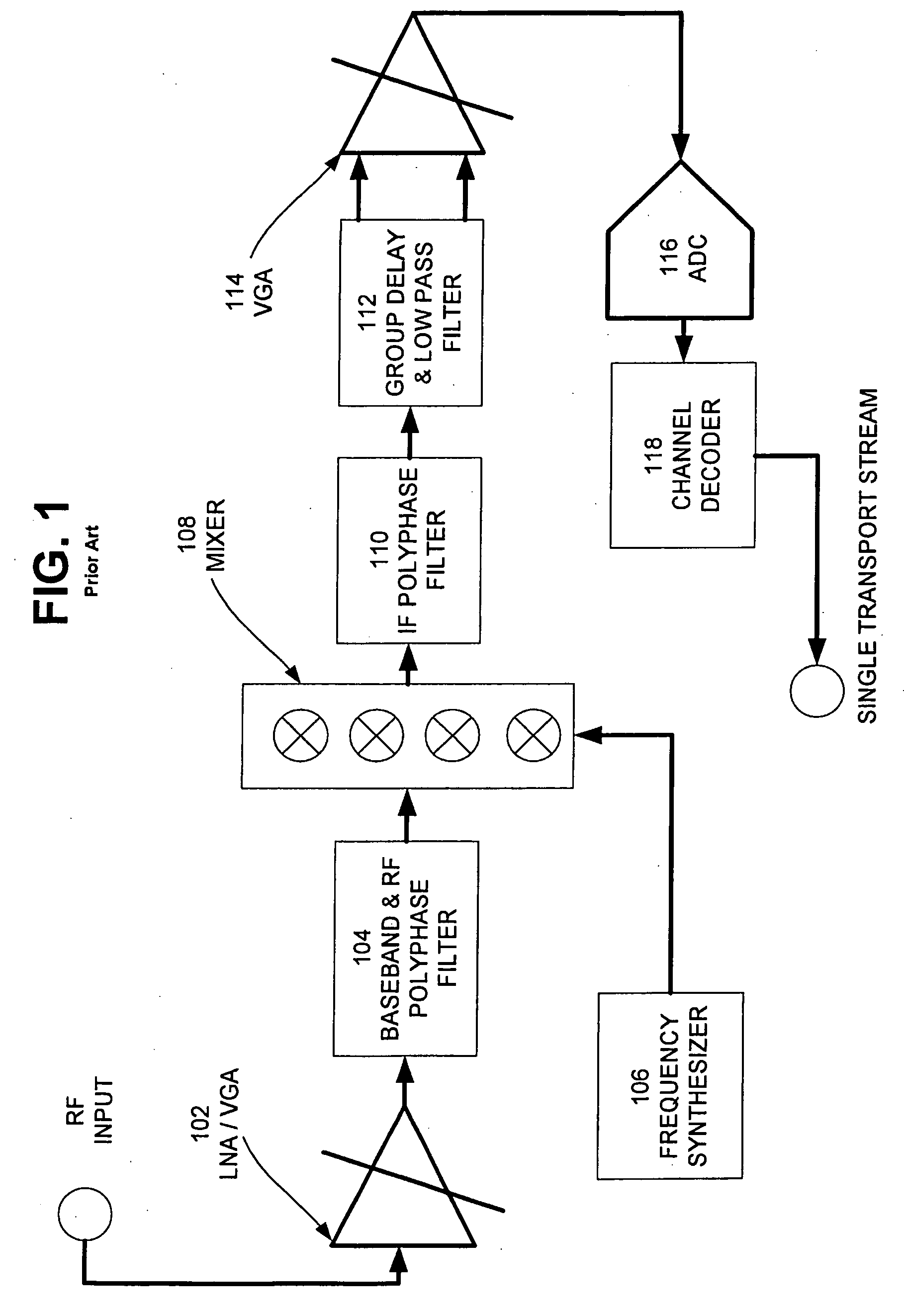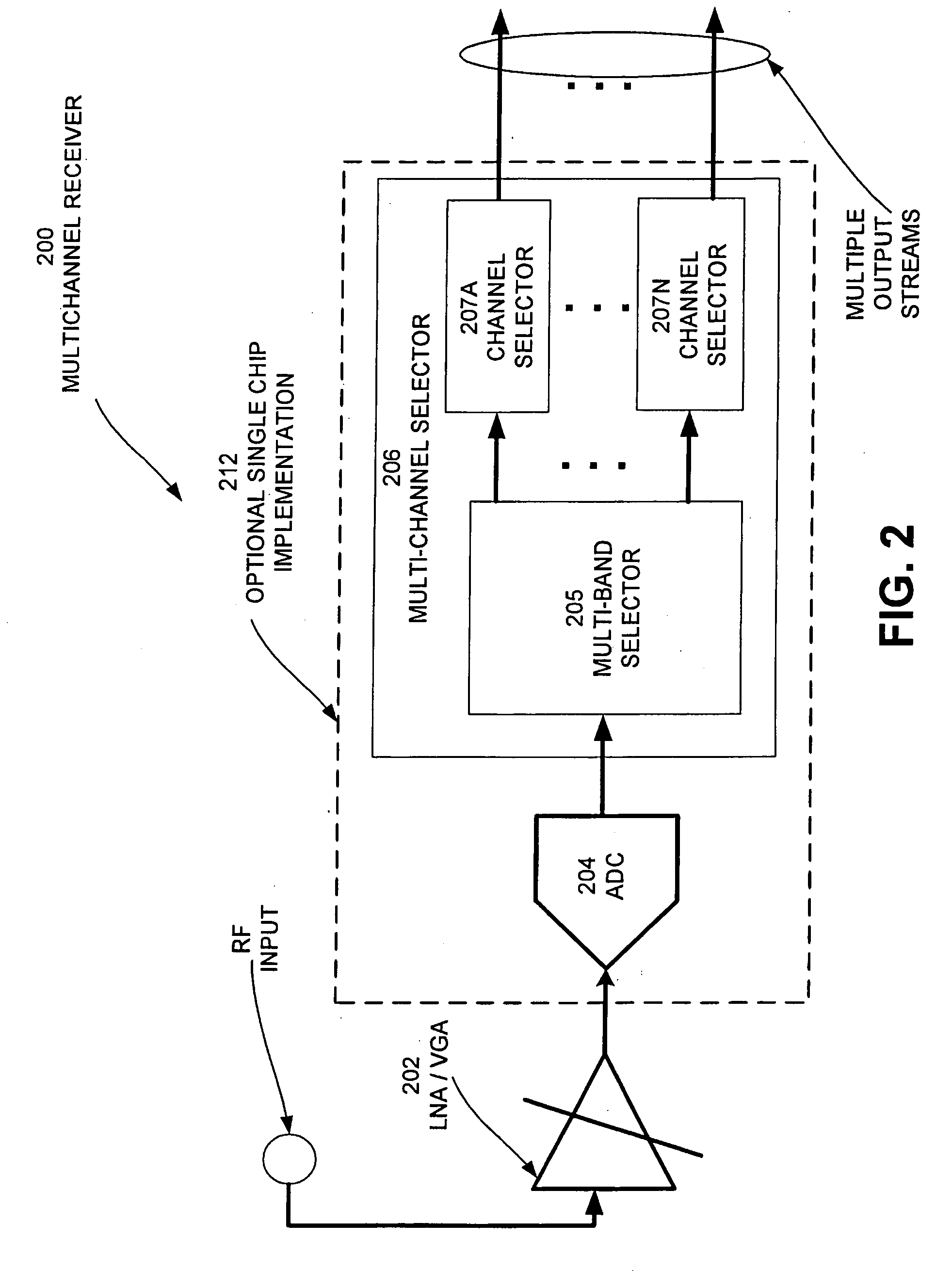Multi-Channel Receiver Architecture and Reception Method
a multi-channel receiver and receiver technology, applied in the field of multi-channel receiver architecture and reception method, can solve the problems of limiting the integration of the tuner into a larger soc system, the existing receiver architecture based on the concept shown in fig. 1 is not able to meet properly the need for multi-channel reception, and the complexity of the system implementation, signal quality, cost effectiveness,
- Summary
- Abstract
- Description
- Claims
- Application Information
AI Technical Summary
Benefits of technology
Problems solved by technology
Method used
Image
Examples
Embodiment Construction
[0042]In an embodiment, a multi-channel receiver uses an analog to digital converter (ADC) and a high speed multi-band selector (MBS) to provide a selectable multi-channel output to an external device. In another embodiment the ADC and the MBS are implemented on a single IC. In this embodiment, data are transported at very small distances on-chip in a synchronized manner. The IC receiver outputs only the preselected channel information at a significantly lower data rate (e.g. 10MSample / sec instead of 2 GSample / sec) thereby mitigating electromagnetic compatibility (EMC) issues. FIG. 2 illustrates the logical components of a multi-channel receiver (MCR) according to an embodiment.
[0043]MCR 200 comprises LNA / VGA 202, ADC 204, and multi-channel selector 206. Multi-channel selector 206 comprises multi-band selector 205 and channel selectors 207A-207N. Depending on the number of channel selectors that are implemented in multi-channel selector 206 will determine the number of output stream...
PUM
 Login to View More
Login to View More Abstract
Description
Claims
Application Information
 Login to View More
Login to View More - R&D
- Intellectual Property
- Life Sciences
- Materials
- Tech Scout
- Unparalleled Data Quality
- Higher Quality Content
- 60% Fewer Hallucinations
Browse by: Latest US Patents, China's latest patents, Technical Efficacy Thesaurus, Application Domain, Technology Topic, Popular Technical Reports.
© 2025 PatSnap. All rights reserved.Legal|Privacy policy|Modern Slavery Act Transparency Statement|Sitemap|About US| Contact US: help@patsnap.com



